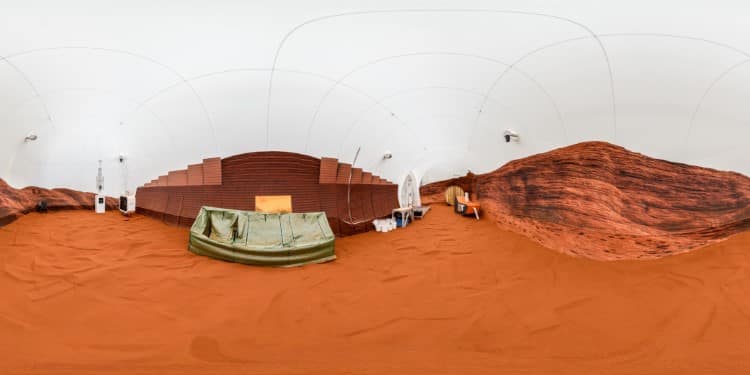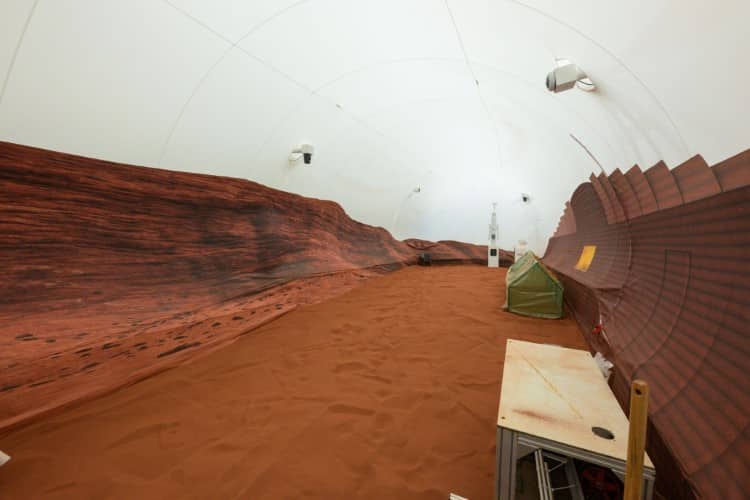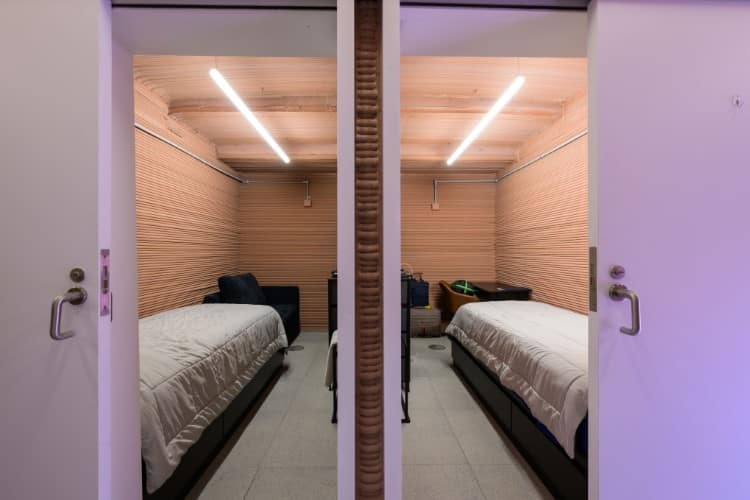
Photo: Bill Stafford/NASA
On our television screens right now, a group of celebrities is acting out life on Mars. But over at NASA, things are going much further as four volunteers have entered a simulated Mars habitat at the Johnson Space Center in Houston, Texas. They’ll spend 378 days inside the environment, facing challenges to prepare the agency for a human mission to the Red Planet.
This CHAPEA (Crew Health and Performance Exploration Analog) mission is the first of three, year-long Mars surface simulations. Seen as important stepping stones to sending astronauts to Mars, the group will tackle issues like resource limitations, equipment failure, and communication delays.
On June 25, the volunteers entered the 3D-printed, 1,700-square-foot habitat, which was designed by Bjarke Ingels. It includes a 1,200-square-foot red “sandbox” to simulate the Martian environment. In addition, there is a kitchen, two bathrooms, living quarters, and areas for medical care, recreation, and work. Aside from the challenges that they’ll face, the crew will carry out their normal daily activities, like exercise, personal hygiene, habitat maintenance, spacewalks, and crop growth.
Selected from a 2021 open call, the volunteers for this special analog mission include a registered member of the Mohawk Nation of the Six Nations, a microbiologist from the U.S. Navy, and a structural engineer. The varied background of the volunteers will help make for a well-rounded skill set inside the Martian simulation.
Kelly Haston, a research scientist who works with stem cells, was chosen as the mission’s commander. Haston is also a member of the Mohawk Nation and was emotional as she stepped into the simulation, stating that space exploration “exemplifies some of the best qualities of humankind.”
“The crew has worked so hard this month to get ready for this mission,” she shared. “It has been very special to be a part of such a tremendous group of scientists and specialists from a diverse set of backgrounds working together to bring CHAPEA 1, the first of three missions, to reality.”
Joining her on this unique journey are structural engineer Ross Brockwell, physician Nathan Jones, and U.S. Navy microbiologist Anca Selariu. Together they will share a unique experience that will lay the foundation for future missions to Mars.
“The simulation will allow us to collect cognitive and physical performance data to give us more insight into the potential impacts of long-duration missions to Mars on crew health and performance,” said Grace Douglas, CHAPEA principal investigator. “Ultimately, this information will help NASA make informed decisions to design and plan for a successful human mission to Mars.”
Four volunteers will spend over a year inside a simulated Mars environment at the Johnson Space Center.

Photo: Bill Stafford/NASA

Photo: Bill Stafford/NASA
They will tackle different challenges in order to prepare NASA for a human mission to Mars.
NASA CHAPEA: Website
h/t: [CBS News]
Related Articles:
Scientists Discover Large Underground Lake on Mars
Photographer Visualizes Mankind’s First Steps on Planet Mars
17-Year-Old Girl Is Training to Become One of the First Humans on Mars
1 Million Humans Could Live on Mars in Plans for the First Self-Sufficient City
